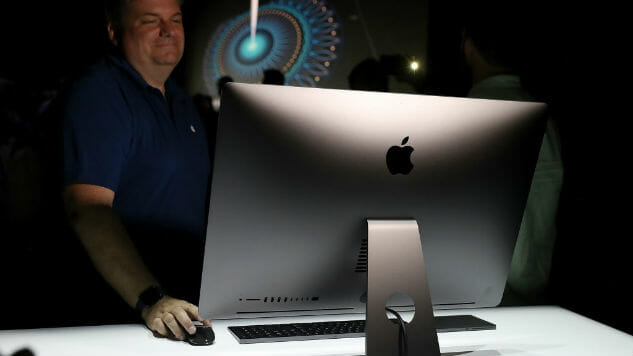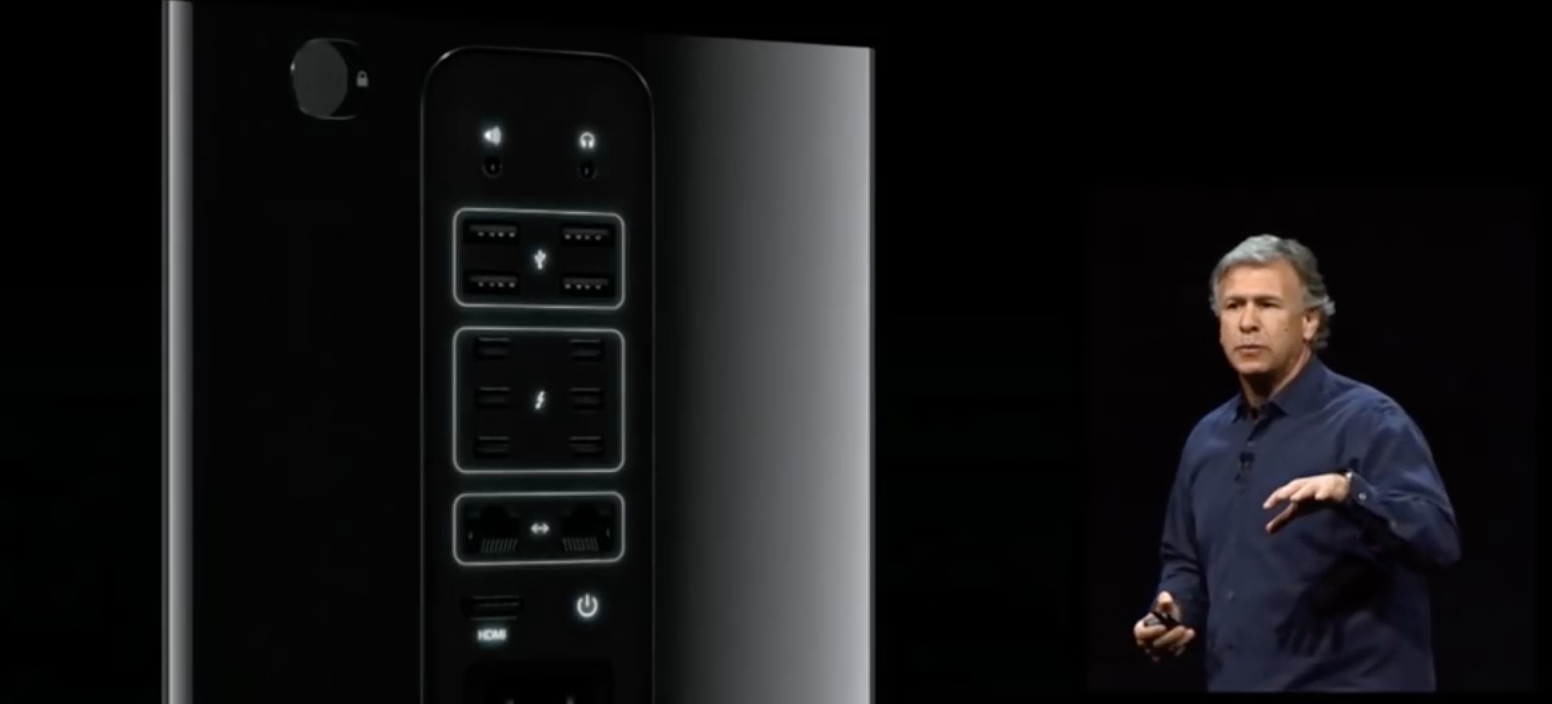Is Apple Actually Listening to Pro Users or Just Grandstanding?

Last week at WWDC, Apple spent an unprecedented amount of time talking about teraflops, GPUs and high-efficiency video coding. 4K and 5K iMacs got a huge update—and we got the introduction of a product called the iMac Pro. We even got performance updates to the new MacBook Pros, that came out just five months ago.
All that to be said, Apple seems to be finally giving Pro users what they want. But are they actually listening to what they need or just grandstanding?
A Long History

Photo by Justin Sullivan / Getty Images.
Apple has a long and storied history with the word “pro” and the use of it in its products. Before the company began piling more and more of its resources into annual updates of the iPhone, Apple was known for its reputation in the professional creative fields. Between its well-designed, powerful desktops and its cutting-edge software, iMacs and MacBook Pros were the go-to home products for video editors, designers, musicians, and photographers.
Rewind to Oct. 27 of last year, when Apple announced the highly-anticipated new lineup of MacBook Pros. CEO Tim Cook took the stage and fawned over the Touch Bar, the company’s fancy new OLED bar that replaced the top row of function keys on the new MacBook Pros. While the Touch Bar is admittedly cool (and ergonomically smart), it didn’t exactly please pro users, who were looking for more practical tools and updates.
Other products with the “Pro” designation were getting features cut or hidden to make them more accessible, especially in Final Cut Pro X and Logic Pro X. These two pieces of proprietary professional software saw some significant changes in the past few years that professionals haven’t been all that happy with (especially on the Final Cut Pro side of things). It doesn’t help that the company now has an iPad “Pro” as well, which clearly isn’t made with professionals in mind in any significant way. It’s left the market confused at about who these products are really made for.
Apple’s announcement came on the heels of Microsoft’s big Surface event where it announced two products designed specifically for professional creatives: the Surface Studio and the Surface Book With Performance Base. The Surface Studio is an all-in-one desktop computer that packs a ton of power and features a couple of important features that visual designers and artists will love. The focus was on the creativity that the product empowers, not the technical prowess of the desktop. Microsoft was acting like Apple—at least, the old Apple that pro users remembered.
-

-

-

-

-

-

-

-

-

-

-

-

-

-

-

-

-

-

-

-

-

-

-

-

-

-

-

-

-

-

-

-

-

-

-

-

-

-

-

-









































